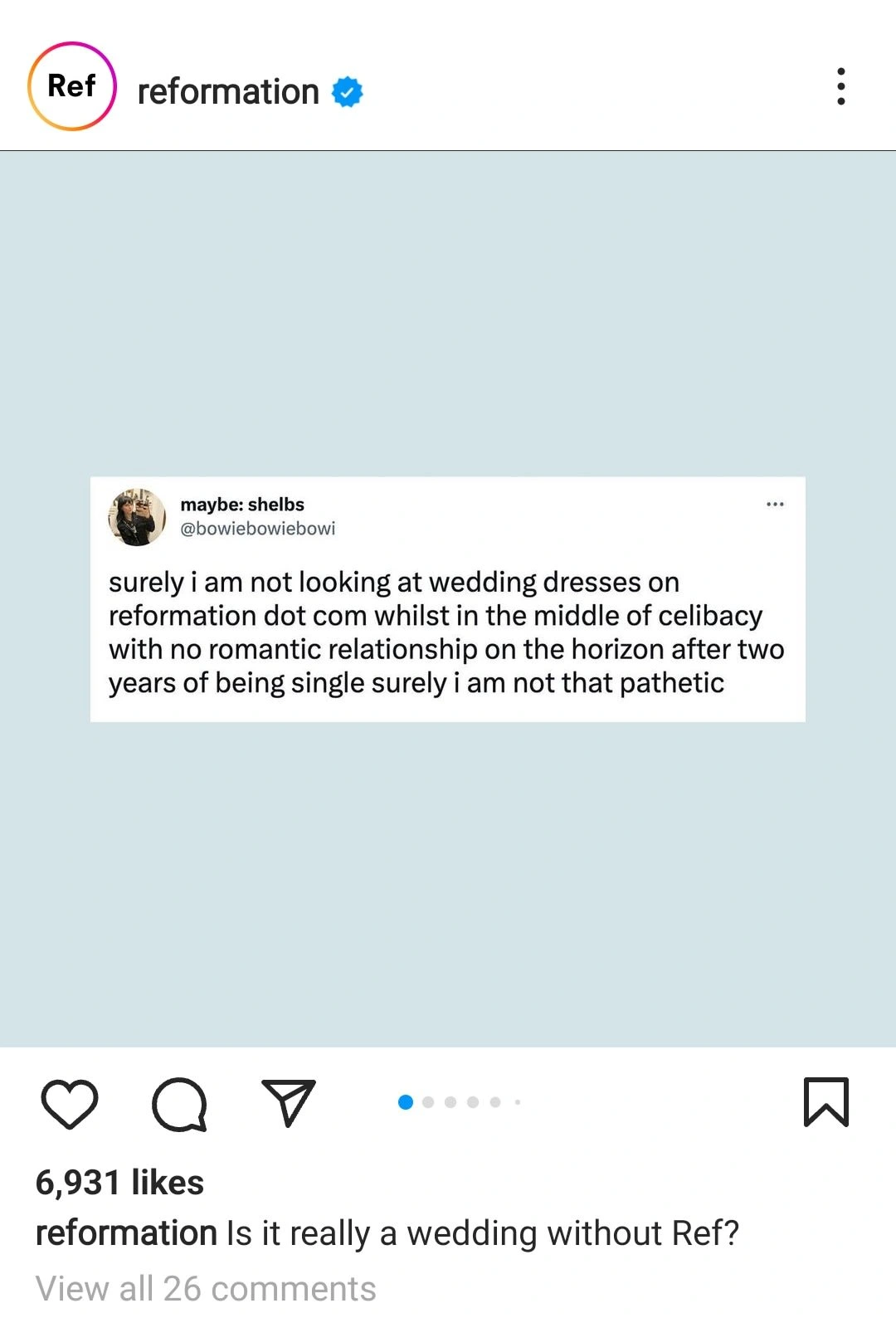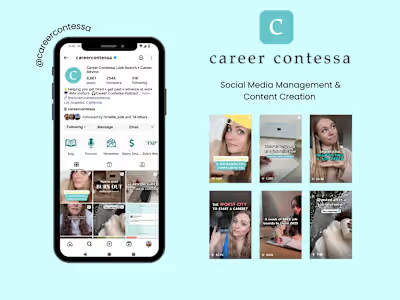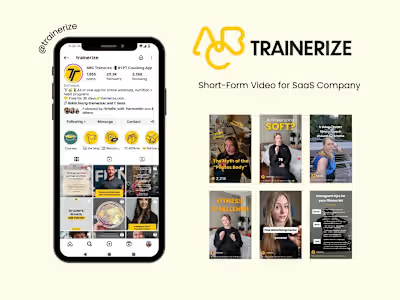Paid vs. Organic Social Media: What to prioritize in 2023?

Not sure if you should be prioritizing paid vs. organic social media posts? Understanding the difference between paid and organic posts, and when to use them, is crucial for developing a social media strategy in 2023.
That question alone is why it is necessary to understand the differences of paid vs. organic posts, and when to use them. No doubt you’re here right now because the infamous “algorithm” hasn’t been favoring your organic posts lately, and you’re wondering if a little ad spend can fix the problem.
Hold up. Before your desperate fingers hit that enticing “Promote Now” button, let’s break down the true role of both paid and organic social media posts. If your goal is to join the ranks of social media superstars like Nike, Spotify and AirBnB, it’s best to develop a hybrid strategy with a healthy serving of both paid and organic posts.
What is an organic social media post?
Organic social media posts are the free, standard posts that anyone can make on social media. Unlike paid posts, they're not targeted to specific groups of people. Instead, organic posts are shown to a percentage of your followers and their network, as well as users searching for relevant hashtags and search terms.
Benefits of organic social media
Think of organic social posts as brand building. While ads have the potential to increase sales, they do not foster community and connection – that’s where organic posts shine.
Organic posts allow consumers to interact with your business through comments, direct messages, shares and more. These online interactions offer invaluable insights into the minds of consumers and your customers. Posting organic content provides many benefits, including:
Cost-effective: Organic social media posts are free, which makes them a cost-effective way to reach and engage with your audience.
Builds brand awareness: Posting regularly on social media can help build brand awareness, as it keeps your brand top-of-mind for your followers.
Increases engagement: Organic posts can encourage engagement from your followers, as they're more likely to comment, like, and share content that they find interesting or useful.
Fosters community: By posting consistently and engaging with your followers, you can create a sense of community around your brand or business.

Wendy’s has personified their brand and build a cult following on Twitter through comical organic content.
What is paid social media advertising?
Paid social refers to when a company pays money to show their ads on social media platforms. We’ve all seen the “#ad” or “sponsored” pasted to the caption of an Instagram Reel or Tweet. These ads can show up in your feed or as sponsored posts, and they're designed to reach a specific audience and drive more traffic to the advertiser's website or page.
Benefits of paid social ads
Paid social advertisements are best if you’re looking for predictable results. While organic posts may fluctuate in performance, paid advertisements are pushed to your selected audience in order to achieve the goals of your campaign — so long as you keep paying.
With paid social advertising, your business benefits from:
Targeted audience: Paid social posts allow you to target a specific audience based on demographics, interests, behaviors, and other criteria. This can help ensure that your content reaches the right people who are most likely to be interested in your products or services.
Increased reach: Paid social posts can help increase your reach by promoting your content to a larger audience than your organic reach alone. This can help you gain more visibility and attract new followers.
Fast results: Paid social posts can provide fast results as they can start generating traffic and conversions as soon as they are launched. This can be particularly beneficial for businesses that want to achieve quick results.
Measurable results: Paid social posts provide measurable results, allowing you to track the success of your campaigns and make data-driven decisions. You can track metrics such as clicks, conversions, and engagement rates to optimize your campaigns and improve your ROI.
Customizable budgets: Paid social posts offer customizable budgets, allowing businesses to set their own budgets and adjust them as needed. This can be particularly helpful for small businesses with limited budgets.
Example of a paid social media post used to promote a new product from Sundays furniture.
When to Use Organic vs. Paid Social Media Posts
When it comes to choosing between paid vs. organic social media, there are three main considerations to make:
Time
Money
Results
How much time and effort are you willing to invest? How much are you willing to spend to achieve your goals? And what exactly are those goals?
If you're looking to get quick results and reach a specific audience, paid social media is your best bet. This is because paid social campaigns allow you to target your ideal customer, which generates leads and conversions faster. For example, if you're launching a new product or service, a paid social media campaign can help get the word out to your ideal customer and generate buzz.
On the flip side, if your goal is to create a dedicated community of brand loyalists, organic social media reigns supreme. For example, eCommerce fashion giant Reformation lean heavily on organic posts to foster community. They frequently reshare customer tweets and memes that joke about their brand, which makes use of user-generated content and organic brand building all at once.

Example of an organic post by fashion brand Reformation.
As much as 81% of consumers say they need to trust a brand before they’ll consider a purchase. How do you begin building that trust? Organic social media. You'll need to put in consistent effort and a strategic approach to building and engaging with your audience.
How to Combine Paid and Organic Social Strategy
There is no “one size fits all” approach to social media, and for that reason a hybrid approach that includes both organic and paid posts often works best. So, what is the best way to combine the two?
To build a social media strategy that includes both paid and organic social media posts, follow these steps:
Define your goals: Identify your business goals and what you want to achieve through your social media strategy. For example, increasing brand awareness, generating leads, or driving sales.
Understand your target audience: Determine who your ideal customer is and what their interests, behaviors, and demographics are. This will help you create targeted content and ads that resonate with your audience.
Choose your platforms: Determine which social media platforms your audience is most active on and which platforms align with your business goals.
Develop your content strategy: Create a content calendar that outlines the types of content you will post, how often you will post, and what topics you will cover. Remember, paid content works best for campaigns requiring quick results, while organic is necessary for brand awareness and community building.
Determine your budget: Set a budget for your paid social media ads and determine how much you can afford to spend on each platform. If you don’t have much to spend on ads, plan to increase your organic content production.
Measure and optimize: Track the performance of your social media campaigns and make data-driven decisions to optimize your strategy over time. Monitor metrics such as engagement rates, click-through rates, and conversions to see what is working and what needs improvement.
Remember, building a social media strategy takes time and effort. It's important to be consistent, test different approaches, and make adjustments as needed. Depending on your industry and products, you may find paid ads work best, while other service-based businesses may prosper more from building an organic social presence.
It’s Time to Crush the Social Media Game in 2023!
The debate between paid vs. organic social media is not an either-or scenario. To achieve the best ROI on your social media strategy, it's important to prioritize a hybrid approach that leverages the advantages of both paid and organic social media posts.
Paid social media allows you to quickly reach a specific audience and generate leads and conversions, while organic social media helps to establish long-term relationships with your audience and establish yourself as a thought leader in your industry.
By using a combination of both paid and organic social media posts, brands can effectively achieve multiple business goals, depending on where they are in their business journey and the resources available to them.
It's important to define your business goals, target your audience, and set a budget for your paid social media campaigns, while also consistently creating high-quality organic content that engages your audience and fosters brand loyalty. Ultimately, a hybrid approach that prioritizes both paid and organic social media will help you achieve the best results on your social media strategy.
Need help with your social media strategy? Schedule a call with me today and together we can turn your socials into a lead generation machine!
Like this project
Posted Mar 17, 2023
Understanding the difference between paid and organic posts, and when to use them, is crucial for developing a social media strategy in 2023.








